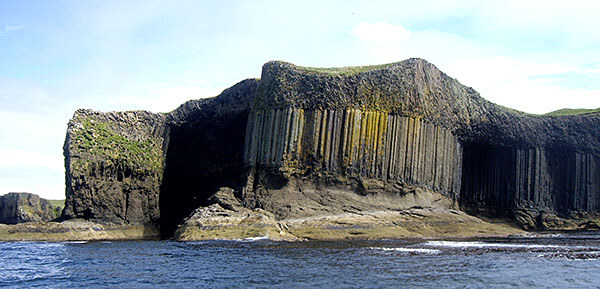
Scotland is known for its beautiful, awe-inspiring sights and the Cliffs on Staffa at the Hebrides are no different. This magnificent set of cliffs is located about seven miles west of the Island of Mull. Not much is known about the area’s history as it was uninhabited and didn’t see a lot of human life until the end of the 18th century. Sir Joseph Banks is responsible for putting this spot on the map.
He frequently visited there to appreciate the beauty in the basalt columns (similar to those at the Giant's Causeway) and the main sea cave, which he called Fingal’s Cave. Soon to follow his footsteps was Queen Victoria and Felix Mendelsson who wrote Hebrides Overture in honor of the island. Today, the area is in care of the National Trust of Scotland.
What makes this area so amazing? The islands are the result of volcanic action over millions of years. The bottom most part is made up of tough, under-heath colonnades of black fine-grained basalt. The third layer is made up of basaltic lava without crystalline properties. It is the slow cooling of the second layer that created the amazing pattern of mostly hexagonal columns. This is what forms the face and walls of the caves.
The most famous cave is Fingal’s Cave. It’s located near the southern tip of the island and measures 20m high and 75m long. The cliff is called the Colonnade or theGreat Face. There are many charters you can take to get a great view of this beautiful part of Scotland.
Photo by ᚛Tilly Mint᚜ on flickr
You should follow me on twitter here.